A new research reactor must be studied, says Parliamentary committee
November 29, 2010 – Federal politicians are keeping the possibility of a new research reactor open as a part of the public discussion in Parliament. The House of Commons Standing Committee on Natural Resources has recommended, “That the Government of Canada study the feasibility of a new multi-purpose research reactor in order to accurately estimate construction and operating costs as well as potential sources of income and report the results to Parliament.”
The recommendation came on November 24 in a report entitled, “The National Research Universal Reactor Shutdown and the Future of Medical Isotope Production and Research in Canada.”
Parliamentary protocol gives the Government 120 days to respond to committee reports.
Scientists Support Proposed Neutron Beam Reactor at University of Saskatchewan

CINS members gather at proposed site for a research reactor as a source of neutron beams, with the Canadian Light Source in the background.
Saskatoon, SK, October 19, 2010 – The proposal of the Province of Saskatchewan for building a nuclear reactor for scientific research on the campus of the University of Saskatchewan was unanimously endorsed at a gathering of Canadian scientists in Saskatoon on Saturday.
The event was the annual meeting of the Canadian Institute for Neutron Scattering (CINS), which represents over 400 Canadian researchers and students from universities and industry that use neutron beams to study advanced materials.
“Our members are very excited by the proposal to build a new neutron beam research reactor here,” said Dominic Ryan, President of CINS. “The strong support and enthusiasm by the university, the city, and the province to build this visionary facility is very clear.”
The proposed facility, called the Canadian Neutron Source (CNS), will be a complement to the Canadian Light Source (CLS). Locating these together at the university would enhance the potential research impacts and greatly increase the stature of Saskatchewan in scientific research. Because both are scientific user facilities, greater numbers of foreign scientists, as well as researchers from all over Canada, would travel here to conduct their research.
“These are complementary research tools because neutrons and light see materials in very different ways,” said Dominic Ryan. “Taking the results from both yields a more complete understanding than either method could provide separately.”
The CNS would supply neutron beams to an array of research instruments in much the same way that the storage ring at the CLS supplies very intense light beams to its instruments.
“The CNS will use a small reactor core, about the size of a beer keg,” said Dominic Ryan.
The CNS will support research on materials of many kinds, including bio-materials and pharmaceuticals for the medical and life sciences. It will support a spectrum of research and development, from fundamental research into new exotic materials, such as superconductors which have no electrical resistance, to development of industrial materials and manufacturing processes.
For more information:
NRU Reactor Returns to Service
August 5, 2010 – AECL has completed the welding of the NRU reactor vessel. Neutron beams are expected to be available by mid-August. For more information, consult AECL’s NRUCanada website.
As a result of this good news, neutron beam experiments are resuming at the NRC – Canadian Neutron Beam Centre. See Apply for Beamtime for more information.
NRU Repair – Almost There!
August 5, 2010 – AECL has completed the welding of the NRU reactor vessel. Neutron beams are expected to be available by mid-August. For more information, consult AECL’s NRUCanada website.
Proposals for beam time at the NRC-CNBC are encouraged. See Apply for Beamtime for more information.
Panel Calls for a New Research Reactor
July 2, 2010 – A panel of experts representing the research functions of the NRU reactor (materials research using neutron beams and nuclear energy development) addressed a gathering of scientists as part of the American Conference on Neutron Scattering in Ottawa earlier this week.

As co-organizer of the session, CINS prepared the following outcome statement based on the views expressed by the panelists:
As a community, our future depends on our ability to train new researchers, to develop new ideas and to retain expertise and knowledge. We strongly believe that a domestic neutron source is the only effective base for a viable neutron user community. We recognise that such a source represents a major strategic investment in Canada’s infrastructure for science and industry, and that decisions about the nature of the source and its location should be reached in consultation with all possible stake-holders.
The knowledge generated at multi-purpose neutron facility contributes to the competitiveness of the Canadian aerospace, automotive, power generation, oil and gas, metal-forming, manufacturing and nuclear industries. The research environment will stimulate multidisciplinary collaboration and act as a magnet for the highly creative scientists and engineers that will be essential for Canada to exercise leadership in our strategic priorities including health sciences, information and communication technologies, environmental stewardship and nanotechnology.
We therefore call on industry, the science community and Governments to actively support the development of an engineering and business case that can be used to determine how best to accommodate the needs of Canadian industry, academia and healthcare for the next 50 years, and that supports Canada’s innovation agenda.
For more information, the following resources are available:
- Press release: Expert Panel Calls for a New Research Reactor.
- Session Summary (by the Materials Research Society)
- Session Agenda
CINS AGM: The Future of Neutron Scattering in Canada
|
June 18, 2010 – The Canadian Institute for Neutron Scattering (CINS) is pleased to announce that this year’s Annual General Meeting will be held in Saskatoon, SK and will be co-hosted by the University of Saskatchewan and the Canadian Light Source. The meeting is Oct. 15- 17, 2010 and will include prominent speakers and a tour of the Canadian Light Source. The title of this year’s meeting is “The Future of Neutron Scattering in Canada” and a major goal will be to raise the public profile of neutron scattering and discuss the business case for a new neutron source for Canada. In addition the local hosts and their partners will highlight to the CINS community the capability and enthusiasm of Saskatoon as a potential site for a new neutron source. CINS members are strongly encouraged to attend this exciting meeting and contribute to a scientific poster session showcasing their diverse interests and accomplishments. Read More… |
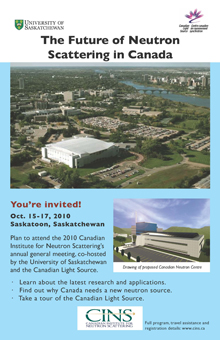 |
NRU Reactor Weld Complete
June 16, 2010 – AECL has completed the welding of the NRU reactor vessel. Neutron beams are expected to be available by the end of July. For more information, consult AECL’s NRUcanada website.
During the shutdown of the NRU reactor, CINS encourages proposals for beam time at the NRC-CNBC and simultaneous applications to foreign facilities. See Getting beamtime during the shutdown for more information.
The Future of Neutron Scattering in Canada
2010 May 31 – CINS is co-hosting a special session at the 2010 ACNS conference, entitled, The future of Neutron Scattering in Canada. This session will discuss recent developments related to the prospect for a new research reactor for Canada. The need for such a facility will be discussed, both from the perspectives of neutron scattering and from nuclear energy R&D. It will also provide a forum for stakeholders to discuss a course of action.
NRU To Be Fixed by the End of July 2010
2010 May 31 – The NRU reactor is expected to be fixed by the end of July. See AECL’s latest status reports on reparing the NRU reactor.
Federal Response to the Expert Panel on Medical Isotope Production
March 31, 2010 – The Government of Canada (GoC) released its response to report of the NRCan Expert Review Panel on Medical Isotope Production. Concerning the NRU reactor and a possible new reactor, the GoC Response stated:
“It is not the intention to have the NRU produce isotopes beyond 2016. Investment in non-reactor-based production is intended to support development of non-federal supply options that will serve well beyond 2016. … A research reactor serves many missions. The need for a new reactor for these other purposes would need to be based on a thorough assessment of the missions, including neutron scattering and R&D for the nuclear industry, and consideration of the appropriate sharing of costs among the many users and beneficiaries of such a facility.”
Concerning isotope production:
“The Government of Canada is looking to transform the way Canada produces medical isotopes, and in particular Tc-99m, so that Canadian production is on a sound commercial footing without government support; production is scaled to the needs of Canadians; it is sustainable in terms of environmental impacts, health, safety and security; and Canada remains a global technological leader. … [Thus,] a $35 million funding program is being developed, which would invest in the research, development and demonstration (RD&D) of non-reactor-based technologies for the production of Tc-99m. This program would consider proposals for RD&D activities for the cyclotron or Mo-100 transmutation options.”
More information, including both the full report and the GoC’s Response, are available on the isotope section of Natural Resources Canada’ s website:
http://nrcan.gc.ca/eneene/sources/uranuc/mediso-eng.php.
CNBC Annual Report to CINS for 2008 Activities
|
2009 December – The Canadian Neutron Beam Centre’s (CNBC) annual report to CINS for 2008 activites is now available. An low resolution electronic version is available here (12 Mb). To request a hard-copy, contact Daniel Banks. |
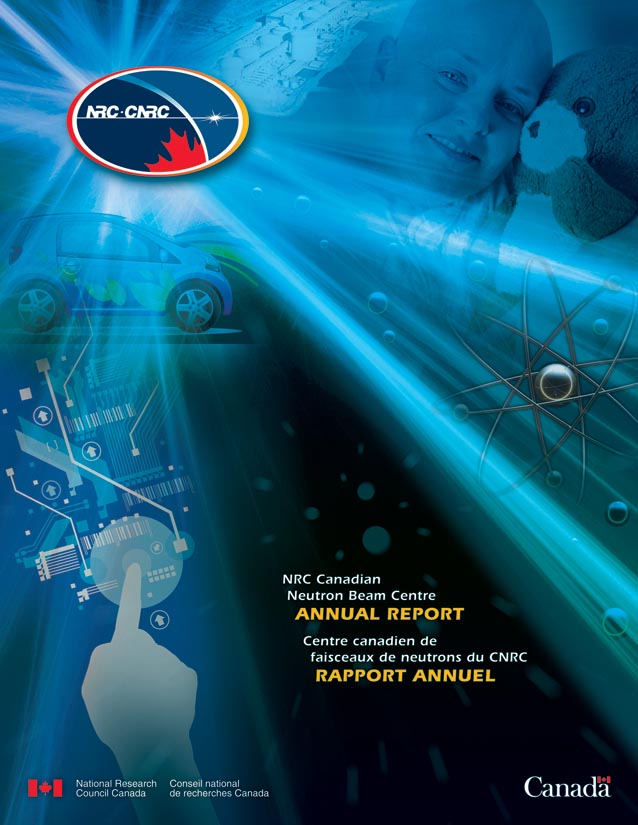 |
Expert Panel Recommends New Research Reactor
December 9, 2009 – The NRCan Expert Review Panel on Medical Isotope Production reported to the Minister on November 30, and the report was made public on December 5.
The report discusses a a wide range of options, considering feasibility, timeliness and costs and identify two key technologies for further development. The first, and clearest choice, is the new research reactor. The second idea is to use cyclotrons for local Tc99m production from Mo100 targets in population centres.
Some highlights taken from the executive summary:
The lowest-risk path to new Mo-99/Tc-99m production capacity is to build a new multi-purpose research reactor. The research reactor also promises the most associated benefits to Canadians based on its multiple purposes.
Research reactors are shared facilities that have all the benefits associated with multi-use facilities, including the benefit of costs being spread over a large base of activities.
We recommend that the government expeditiously engage in the replacement of the NRU reactor as we believe a multi-purpose research reactor represents the best primary option to create a sustainable source of Mo-99, recognizing that the reactor’s other missions would also play a role in justifying the costs. With the National Research Universal (NRU) reactor approaching the end of its life cycle, a decision on a new research reactor is needed quickly to minimize any gap between the start-up of a new reactor and the permanent shutdown of the NRU.
The following resources are available for more information:
- The Report of the Expert Review Panel on Medical Isotope Production includes an executive summary.
- CINS’s expression of interest considered by the panel describes the need for the Canadian Neutron Centre, a new multi-purpose research reactor.
- CINS’s long-range plan, Planning to 2050, describes the Canadian Neutron Centre for a general audience. It is summarized in a reversible bilingual document:
- The full version of CINS Planning to 2050 includes the details of the requirements of the Canadian Neutron Centre to meet the needs of the Canadian community of scientists who use neutron beams.
2009 Annual Meeting
CINS held its 2009 annual meeting on October 30-31, at the University of Toronto.
National Lab to Replace Chalk River Reactor
The Canadian science community that uses the neutron beams produced by the NRU reactor in Chalk River has released its plan to replace it with a national laboratory.
“That the National Research Council asked us to produce our plan for the proposed Canadian Neutron Centre (CNC) shows that this is being seriously considered,” said Dr. Ryan, CINS President.
NRU Reactor is temporarily shut-down
NRU was shutdown for maintenance on May 14, 2009. Currently, the reactor is expected to be back up, likely in the first quarter of 2010. See AECL’s NRU status reports for details. Proposals for beam time at the Canadian Neutron Beam Centre are still encouraged, because we aim to be running approved user projects (especially those for Canadian academics) immediately on restart of the NRU reactor.
Meanwhile, we are pleased to announce limited travel assistance for those who choose to apply in parallel for beam time at foreign neutron laboratories.
|
More information about getting beamtime during the NRU shutdown |
CNBC Annual Report to CINS for 2007 Activities
2009 January 9
The Canadian Neutron Beam Centre’s (CNBC) annual report to CINS for 2007 activites is now available. An low resolution electronic version is available here (9 Mb). To request a hard-copy, contact Daniel Banks.
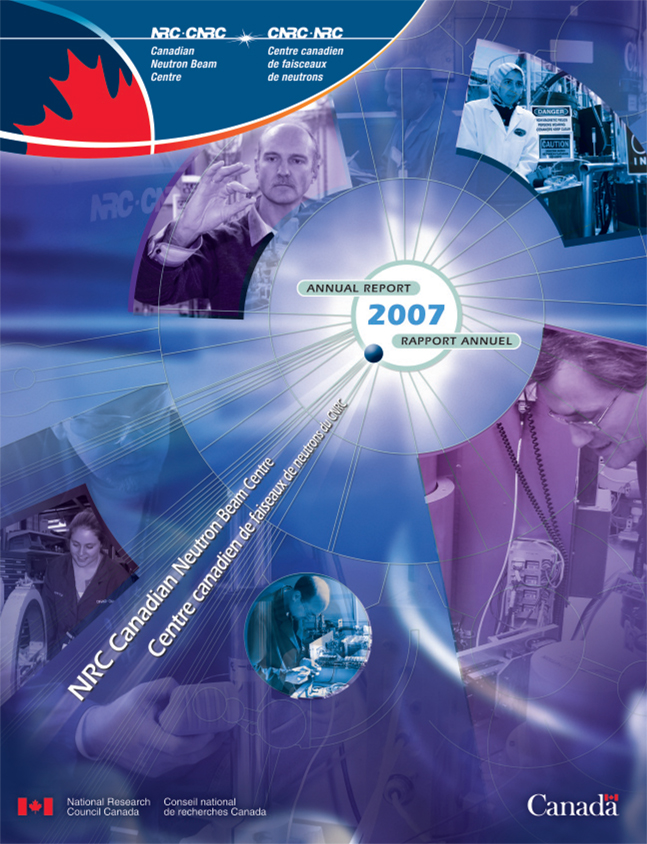
10th Neutron Summer School at Chalk River: June 15-19, 2009
The Canadian Neutron Beam Centre will be holding a Neutron Summer School to be held at Chalk River June 15-19, 2009. This will be the tenth summer school on the topic held at Chalk River. The school covers a wide range of neutron scattering topics with practical experiments.
Read more…

2006 Summer School at Chalk River
Annual General Meeting 2008: Oct 17-18
2008 August 25
The Annual General Meeting (AGM) of the Canadian Institute of Neutron Scattering will be held on the campus of the Royal Military College (RMC) in Kingston, Ontario on Oct 17-18, 2008. The details are available on the annual meeting website. The draft minutes of the 2007 AGM will be presented to the membership at the 2008 AGM.
The CINS Plan to 2050 has been printed!
2008 April 28
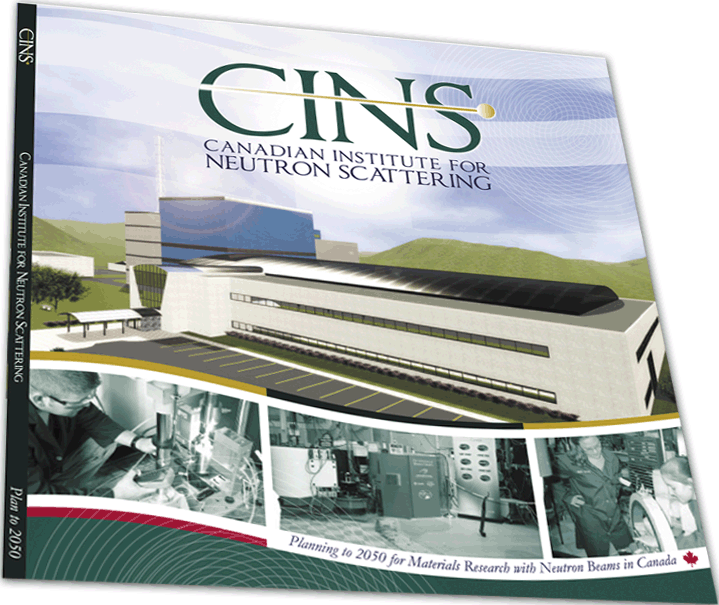 |
|---|
The plan describes the vision of many members of the Canadian Institute for Neutron Scattering (CINS) – who we are, where we are heading and what we need to get there. At its core, this plan assumes that a decision will be taken by Canada to invest in a new Canadian Neutron Centre (CNC). We look forward to the CNC as a world-class, multipurpose research reactor, which will supersede and expand the capabilities of today’s NRU reactor at Chalk River. Our key requirements for the CNC are a world-class neutron flux, a cold-neutron source and a modern neutron guide hall with beam lines that enable research on soft materials, nanostructures, and industrial components not previously possible in Canada. To compete with neutron facilities in other countries, we also require facilities to maintain a vigorous program of innovation in neutron scattering methods, a working environment that is conducive to scientific exchange among visiting users from across Canada and abroad, and a governance / management model that respects the operational needs of our neutron user community.
We hope this plan will serve as a helpful resource in consideration of a major science investment to ensure Canada will continue its world-class presence in materials research with neutron beams, and build on the legacy of the Canadian Nobel Laureate Prof. Bertram Brockhouse!
NRU Reactor – Routine operation
2008 April 21
The NRU Reactor, Canada’s national neutron source and home of the NRC Canadian Neutron Beam Centre, was shut down for an extended period from mid-November to mid-December of 2007, but has been operating with its usual high capacity factor since then. The shutdown was the subject of considerable attention by the Canadian parliament and the media, as it put at risk the flow of isotopes needed for nuclear medicine applications across Canada and worldwide.
The great value of NRU as a multipurpose, highly-productive science facility is felt keenly when it is temporarily lost. The current effects of the NRU shutdown highlight the need for a new neutron facility in Canada – one that is constructed to meet modern regulatory standards and that can carry on the impressive scientific legacy of NRU for Canadian science, health, industry, education, energy and trade. This is a matter of urgent, national importance that CINS has been raising for more than a decade.
2007 Annual General Meeting
October 26-27 2007
The 2007 Annual General Meeting was held at Queen’s University on October 26 and 27. Read more about the outcomes and decisions from that meeting.
NRU 50th anniversary
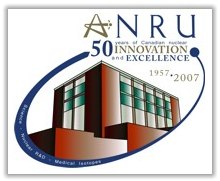
2007 was the 50th anniversary year for the NRU reactor: Canada’s most productive science facility and the source of neutrons for the NRC Canadian Neutron Beam Centre. You can read more about NRU and its achivements at www.NRUreactor.ca or on wikipedia. The actual day for the 50th celebration was November 3rd. Atomic Energy of Canada Limited held events on the 2nd and 3rd.
2006 Annual General Meeting
October 13-15 2006
The annual meeting of Canadian Institute for Neutron Scattering was held on October 13-15 at the University of Western Ontario, in London. Participants came from universities, industries and government laboratories, representing a community of over 400 members from across Canada and abroad, most of whom carry out advanced materials research as users of the National Research Council’s neutron beam laboratory at Chalk River.
The meeting highlighted a new neutron reflectometer, which is being installed at the NRU reactor in Chalk River, Canada’s only major source of neutrons for materials research. Building the neutron reflectometer is a national project, led by the University of Western Ontario, with support of twelve other universities, and funded by the Canada Foundation for Innovation in partnership with the Ontario Innovation Trust, the Ontario Ministry of Economic Development and Trade, and the National Research Council of Canada. The new reflectometer will enable researchers and students in Canada to investigate materials that are important for health, the environment, computer memory and fundamental research in chemistry, physics and materials science. Dr. C. Majkrzak, from the U.S. National Institute for Standards and Technology, spoke about the new Canadian reflectometer and declared it to be a world-leading design that will enable forefront research in nanotechnology.
The meeting also kick-started a Long-range plan for neutron beam research facilities in Canada to a time horizon of 2050. Working groups considered the requirements for future neutron beam instruments from the perspectives of their scientific fields, including biophysics, polymer chemistry, magnetism, superconductivity, materials science, engineering, structural chemistry and earth science. International observers from Oak Ridge National Laboratory and NIST provided feedback as presentations were made to a plenary session. The merits of various possible neutron beam instruments were debated in considering how best to meet the requirements of Canadian neutron beam users. The Long Range Plan for Neutron Instrumentation to 2050 is expected to be completed by December 2006, through the work of a committee led by Prof. J. Greedan of McMaster University, supported by Profs. Thad Harroun (Brock University), Lynann Clapham (Queen’s University), Carl Adams (St. Francis Xavier University) and Dr. John Root (NRC – Canadian Neutron Beam Centre).
Developing a long-range plan for neutron beam instruments is timely because the NRU reactor is nearly 50 years old. It is licensed to operate to about 2012, but a replacement would take several years to build and would constitute the largest investment Canada ever made in the national infrastructure for science and industry. Therefore, careful consideration of user requirements is needed, not only for materials research with neutron beams, but also for support of current nuclear power technology, development of future energy systems, and support of Canada’s nuclear medicine industry, which today is the world’s biggest supplier of isotopes for the diagnosis and treatment of cancer.
The draft minutes from the 2006 CINS AGM are available in MS Word and PDF format.
The status report from the NRC Canadian Neutron Beam Centre at the 2006 CINS AGM is available in Powerpoint (3 Mb) and PDF format. You may need to download the free software required to view Powerpoint or PDF files.
2005 Annual General Meeting
October 14-16 2005
The 2005 CINS AGM was held in Ottawa, in the NRC’s historic building at 100 Sussex Drive.
The AGM included a series of talks from the Canadian neutron scattering community, showing how broad an impact neutron scattering has across the spectrum of Canadian science. There was an update on the plans for participation by the Canadian neutron scattering community in the Spallation Neutron Source, currently under construction at Oak Ridge in the U.S.A.
The minutes from the 2005 CINS AGM
The minutes from the 2005 CINS trustees meeting
2004 Annual General Meeting
September 24-25 2004
The 2004 CINS AGM was held at St. Francis Xavier University, Nova Scotia.
Minutes of the Meeting (90 kb)
John Root’s presentation entitled: “Neutron Program for Materials Research Status Report 2004”(400 kb)
2) John Root’s presentation entitled: Canadian Neutron Facility Part I: Snapshot of the “Big Science” (300 kb)
3) John Root’s presentation entitled: Summary: “Peer Review of the NPMR as part of the NRC’s Steacie Institute for Molecular Sciences” (3 Mb)
A big THANK YOU to Michael Steinitz (St. Francis Xavier University) for hosting the meeting and making the stay in Antigonish so enjoyable.
Symposium on “Canadian Participation at the Spallation Neutron Source.”
October 17-18 2003
To be held at McMaster University in the Council Chambers, Gilmour Hall. The $15M CFI International Access Fund award “Canadian Participation at the SNS” will enable Canadian materials scientists superb access to transformative research opportunities at the Spallation Neutron Source, the world’s next generation neutron beam laboratory currently under construction at Oak Ridge National Laboratory and slated for completion in 2006.
To launch Canadian involvement in this project, this symposium will feature presentations and discussion led by Canadian and international experts as to the outstanding new science opportunities, technical developments and research priorities relevant to the Canadian neutron beam community.All interested materials scientists are strongly encouraged to attend.
CINS presentation on the proposed Canadian Neutron Facility.
August 20, 2002
Prof. Dominic Ryan (McGill), VP of CINS, made a presentation at Chicoutimi Aug 20 to the Government Caucus on Post Secondary Education and Research (chaired by MP Peter Adams of Peterborough). Read more about the presentation to the caucus.
[/mp_span] [/mp_row]